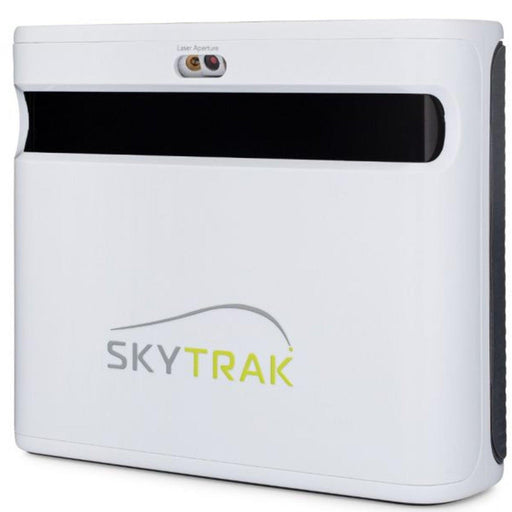
Starting a golf simulator business
Starting a golf simulator business can be a rewarding and lucrative opportunity for entrepreneurs with a passion for golf and a desire to provide a unique and immersive experience for customers. Golf simulators have become increasingly popular in recent years, offering golfers the chance to play virtual rounds of golf in a controlled environment, regardless of the weather outside. If you're considering starting a golf simulator business, there are many important factors to consider, including market research, equipment selection, location, and marketing strategies. In this blog, we will explore the steps you need to take to successfully start and run a golf simulator business, from conducting market research to monitoring finances and creating a unique customer experience. Whether you're a seasoned business owner or a first-time entrepreneur, this blog will provide you with valuable insights and guidance to help you launch and grow your golf simulator business.

Conduct market research:
By conducting market research, you can gain a better understanding of the demand for golf simulators in your area, your target audience, and the competition. This information will help you make informed decisions about the services you offer, your pricing strategy, and how you market your business.
Here are some steps you can follow:
- Define your target audience: Determine who your target audience is and what their interests and needs are. This will help you understand what they are looking for in a golf simulator business.
- Analyze the competition: Research existing golf simulator businesses in your area and find out what they offer, their strengths and weaknesses, and what sets them apart from each other. This will give you an idea of what you need to do to differentiate yourself from the competition.
- Gather data on demand: Collect data on the demand for golf simulators in your area by surveying golf enthusiasts, asking for feedback from local golf courses, and researching online forums and social media.
- Assess the local economy: Evaluate the local economy and the disposable income of potential customers in your area to determine if there is a market for a golf simulator business.
- Conduct online research: Research online to find out what golf simulator products and services are in high demand and what customers are looking for in a golf simulator business.

Develop a business plan:
Developing a business plan is a crucial step in starting a golf simulator business. A business plan will help you outline your goals, strategy, and the resources you need to start and grow your business.
Here are some steps you can follow to develop a business plan:
- Define your business concept: Clearly define what your golf simulator business will offer and how it will differ from other businesses in the same field.
- Set goals and objectives: Outline the specific goals and objectives you want to achieve with your business, such as increasing revenue, expanding your customer base, or growing your brand.
- Conduct market research: Research the demand for golf simulators in your area, the competition, and your target audience. Use this information to inform your business plan.
- Determine your target market: Identify your target market and their interests and needs. This will help you determine what services to offer and how to market your business.
- Create a marketing strategy: Outline how you plan to market your business, including the channels you will use, such as social media, email marketing, and print advertising.
- Develop a pricing strategy: Determine your pricing strategy based on your research, your target market, and your competition. Consider offering different packages, such as hourly rates, lessons, and memberships.
- Outline your operational plan: Describe how you plan to run your business, including details on the equipment you will use, the location you will use, and the staff you will hire.
- Project financials: Create realistic financial projections for your business, including your start-up costs, operating expenses, and revenue projections for the first few years of operation.

Choose a location:
Choosing the right location for your golf simulator business is critical to its success. you can choose a location that is convenient for customers, meets your space and budget requirements, and is compliant with local regulations.
Here are some factors to consider when choosing a location:
- Accessibility: Choose a location that is easily accessible to your target audience, such as a shopping center, recreational complex, or close to a golf course.
- Space requirements: Ensure that the location you choose has enough space for multiple simulators and provides ample space for players to swing their clubs. You may also need space for a pro shop and a lounge area.
- Parking: Consider the parking situation at the location and ensure that there is enough space for customers to park their vehicles.
- Visibility: Choose a location that is highly visible and easy to find, so that customers can easily find and access your business.
- Rent: Consider the cost of rent and ensure that it fits within your budget. A location in a busy shopping center or near a golf course may come with a higher rent, but it may also bring more foot traffic to your business.
- Zoning regulations: Ensure that the location you choose complies with local zoning regulations and that you have the necessary permits and licenses to operate your business.
- Competition: Consider the competition in the area and ensure that your location is not too close to other golf simulator businesses.

Purchase equipment:
Purchasing the right equipment for your golf simulator business is critical to its success. By purchasing the right equipment for your golf simulator business, you can ensure that you provide an enjoyable and realistic experience for your customers.
Here are some steps you can follow to purchase equipment:
- Research the options: Research the different golf simulator systems available on the market and compare their features, accuracy, and prices. Look for systems that offer high-quality graphics, accurate ball tracking, and a wide range of courses to play on.
- Determine your budget: Set a budget for your equipment purchase and ensure that you stay within it. Keep in mind that high-end systems can be expensive, but they will also provide a better experience for your customers.
- Consider the space requirements: Consider the space requirements for each system you are considering and make sure that you have enough room for the simulator, swing mats, and other equipment.
- Look for financing options: If you need financing to purchase your equipment, look for financing options, such as a loan or a lease. Consider the terms and conditions of each option to find the best fit for your business.
- Golf simulator details: Invest in high-quality golf simulators, screens, projectors, launch monitors, computers and other necessary equipment. For more information about golf simulators, use the golf simulator buying guide.

Adding a putting green
Choosing a putting green for your golf simulator business can be an important decision that affects the overall customer experience and the success of your business. By choosing a putting green that is the right size, quality, compatible, cost-effective, and has good warranty and support, you can ensure that you have a high-quality putting green that enhances the overall customer experience and contributes to the success of your golf simulator business.
Here are some factors to consider when choosing a putting green:
- Size: Consider the size of your simulator room and choose a putting green that fits within your available space. You want to ensure that you have enough room for both the simulator and the putting green, while also providing adequate space for customers to move around and play comfortably.
- Quality: Look for a putting green that is made from high-quality materials and has a realistic feel. Choose a putting green that is durable, easy to maintain, and has a similar feel to a real putting green.
- Compatibility with simulator: Ensure that the putting green you choose is compatible with your golf simulator software. This will ensure that your customers have a seamless and immersive experience when playing on the simulator and the putting green.
- Cost: Consider your budget when choosing a putting green. Look for a putting green that provides good value for money, while also delivering a high-quality experience for customers.
- Warranty and support: Consider the warranty and support provided by the manufacturer of the putting green. Choose a putting green from a reputable manufacturer that offers good warranty and support, in case of any issues or problems with the putting green.

Create a unique experience:
To create a unique experience for your golf simulator business, you need to stand out from your competition. By incorporating these elements, you can create a unique and enjoyable experience for your customers that will keep them coming back for more.
Here are some ways you can create a unique experience:
- Offer a variety of courses: Offer a wide range of courses from all over the world, including well-known courses, as well as lesser-known, but challenging courses. Check out our blog about different software options.
- Provide virtual lessons: Provide virtual lessons from professional golfers to help players improve their skills. This will help differentiate your business from others and provide added value to your customers.
- Create a social atmosphere: Create a social atmosphere by providing comfortable seating, a lounge area, and a pro shop where players can socialize before and after their game.
- Offer tournament play: Offer tournament play, either in-person or online, to create a competitive atmosphere and engage customers.
- Use high-quality equipment: Use high-quality equipment that provides a realistic experience, including simulators that accurately track ball flight and provide realistic course graphics.
- Offer food and drinks: Offer food and drinks, either through a full-service bar or by partnering with a local restaurant or catering service, to provide a complete experience for your customers.

Hire staff:
Hiring the right staff for a golf simulator business is crucial to providing a positive experience for your customers. By following these steps, you can hire the right staff for your golf simulator business, ensuring that you provide a positive experience for your customers.
Here are some steps you can follow to hire staff:
- Determine your staffing needs: Determine the number of staff you need, and the skills and responsibilities they will be required to have. This will help you create clear job descriptions and identify the right candidates.
- Write clear job descriptions: Write clear job descriptions that outline the responsibilities, qualifications, and requirements for each position you are hiring for.
- Source candidates: Source candidates through job boards, social media, employee referrals, or local colleges or universities.
- Conduct initial interviews: Conduct initial interviews to determine if the candidates are a good fit for the position and your business. Ask questions about their experience, skills, and how they would handle different scenarios in the job.
- Check references: Check the references of the top candidates to verify their work history and ensure that they are a good fit for the job.
- Offer training: Offer training to new hires to ensure that they have the knowledge and skills they need to perform their job effectively. This can include training on equipment, customer service, and sales.
- Monitor performance: Monitor the performance of your staff regularly and provide feedback to help them improve and grow in their roles.

Market your business:
Marketing your golf simulator business is critical to attracting customers and growing your business. By incorporating these marketing strategies, you can effectively promote your golf simulator business and reach a wider audience.
Here are some ways you can market your business:
- Utilize social media: Use social media platforms, such as Facebook, Instagram, and Twitter, to promote your business, interact with customers, and share updates and news.
- Partner with local businesses: Partner with local businesses, such as hotels, restaurants, and sports stores, to reach a wider audience and attract more customers.
- Offer promotions and discounts: Offer promotions and discounts to attract new customers and keep existing customers coming back.
- Host events and tournaments: Host events and tournaments to create a social atmosphere and engage with customers.
- Utilize email marketing: Utilize email marketing to reach out to customers and keep them informed about new offerings, promotions, and events.
- Create a referral program: Create a referral program to incentivize customers to refer friends and family to your business.
- Collaborate with golf clubs: Collaborate with local golf clubs to reach their members and offer discounts and promotions to attract new customers.
- Utilize print media: Use traditional print media such as local newspapers, magazines, and flyers, to reach a wider audience to promote your business.

Monitor your finances:
Here are some steps you can follow to monitor your finances:
- Set up a system for tracking revenue and expenses: Set up a system, such as QuickBooks or Xero, to track your revenue and expenses on a regular basis.
- Record all transactions: Record all transactions, including sales, purchases, and payments, in your accounting system.
- Create a budget: Create a budget that includes projections for revenue and expenses, and use it to monitor your financial performance on a regular basis.
- Track cash flow: Track your cash flow to ensure that you have sufficient funds to cover your expenses and invest in your business.
- Review financial statements regularly: Review financial statements, such as income statements and balance sheets, regularly to understand your financial performance and identify any potential issues.
- Seek advice from a financial advisor: Seek advice from a financial advisor, such as an accountant or financial planner, to ensure that you are making sound financial decisions and managing your finances effectively.

In conclusion, starting a golf simulator business can be a challenging but rewarding venture. From conducting market research and developing a business plan to selecting equipment, choosing a location, and marketing your business, there are many important steps you need to take to ensure the success of your venture. By focusing on creating a unique customer experience, monitoring your finances, and continuously refining and improving your business, you can build a successful golf simulator business that provides an enjoyable and immersive experience for customers and generates significant revenue for your business. If you're passionate about golf and have the drive and determination to succeed, a golf simulator business could be the perfect opportunity for you.

Have Questions About Golf Simulators?
Our expert team is here to help you find the perfect golf simulator for your needs.
Featured products
-
SkyTrak+
Original price $2,995.00 - Original price $3,145.00Original price$2,995.00 - $3,145.00$2,995.00 - $3,145.00Current price $2,995.00Introducing the SkyTrak+ Launch Monitor: Unmatched Accuracy and Advanced Features Experience a new level of precision and innovation with the SkyTr...
View full details -
ProTee Majestic Simulator Package
Original price $9,618.00 - Original price $13,848.00Original price$9,618.00 - $13,848.00$9,618.00 - $13,848.00Current price $9,618.00ProTee Majestic Golf Simulator Package: Elevate Your Indoor Golf Experience Transform your home or business into a golfer’s dream with the ProTee M...
View full details -
Eagle Golf Mat
Original price $370.00 - Original price $1,130.00Original price $370.00$370.00$370.00 - $1,130.00Current price $370.00Introducing the Eagle Golf Mat: The Ultimate Golf Experience Are you passionate about golf and demand nothing but the very best in your practice eq...
View full details -
Retractable HomeCourse® Golf ProScreen 180
Original price $2,299.00Original price $2,299.00 - Original price $2,299.00Original price $2,299.00Current price $1,999.00$1,999.00 - $1,999.00Current price $1,999.00HomeCourse® Golf ProScreen 180 HomeCourse® Golf ProScreen 180 is a retractable golf screen and enclosure. HomeCourse® Golf ProScreen 180's ballisti...
View full details -
The Augusta V2 4'x12' 2 Cups
Original price $399.00Original price $399.00 - Original price $399.00Original price $399.00Current price $329.00$329.00 - $329.00Current price $329.00The Augusta is one of Big Moss’ traditional models. It offers unmatched versatility for teaching and year round practice. Make a long-term investme...
View full details





